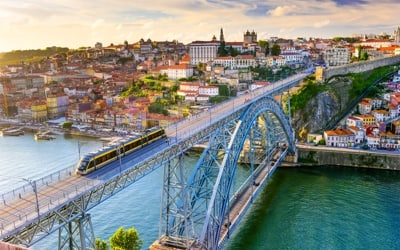
Porto Private Tour from Lisbon - Full Day
1 day
Private
Full Day
Instant confirmation
About this activity
Itinerary
This is a typical itinerary for this product
Stop At: Rio Douro, Porto Portugal
Visit of the fantastic city of Porto
Duration: 30 minutes
Stop At: Torre dos Clerigos, Rua Sao Filipe Neri, Porto 4050-546 Portugal
The Clérigos Church and Tower (18th century) is a remarkable architectural ensemble located in the city of Porto, Portugal, and is considered the ex-libris of this city.
The set is located at the top of Rua dos Clérigos, between the streets of São Filipe Néri (or São Filipe Nery) and Asunción. It integrates three main elements: the Clergy Church, the Clergy Tower and the Brotherhood House, which links the church and the tower and once hosted the other services of the Clergy Brotherhood. Designed by architect Nicolau Nasoni, this ensemble is one of the most notable examples of late Baroque style in Portuguese territory and has been classified as a National Monument since 1910. It is considered Nasoni's most emblematic work, incorporating in the granitic ornamentation "a dynamic rococo morphology alongside vernacular, if not epimaneirist" continuity lines. The most striking architectural elements of the ensemble are characterized by the irregularity and exaggeration of the shapes, which give rise to a surprising scenic effect. "The jagged plants, the undulating façades, highlighted by a counterpoint of overhangs, balconies and recesses, broken arches, and a great profusion of varied windows, complemented by the lush bell tower."
Nasoni was buried in this church, where he spent a lot of time and dedication, and in his recent extensive rehabilitation a crypt was revealed where his grave could be found.
Duration: 30 minutes
Stop At: Porto Cathedral (Se Catedral), Terreiro Se, Porto 4050-573 Portugal
The Porto Cathedral, located in the heart of Porto's historic city center, is one of Portugal's oldest and most important monuments.
Story
The beginning of its construction dates from the first half of the twelfth century, and lasted until the early thirteenth century. This first Romanesque building has undergone many changes over the centuries. From the Romanesque era date the general character of the facade with the towers and the beautiful rosette, as well as the body of the three-nave church covered by cannon vault. The vault of the central nave is supported by arches, and the Sé do Porto is one of the first Portuguese buildings in which this architectural element was used.
In the Gothic era, around 1333, was built the funeral chapel of João Gordo, knight of the Order of Hospitalers and collaborator of D. Dinis, buried in a tomb with water. Also from the Gothic era dates the cloister (14th-15th century), built in the reign of D. João I. This king married D. Filipa de Lencastre in the See of Porto in 1387.
The exterior of the Cathedral was greatly modified in the baroque era. Around 1736, Italian architect Nicolau Nasoni added a beautiful baroque galilee to the side facade of the See. Around 1772 a new portal was built to replace the original Romanesque. The balustrades and domes of the towers are also baroque.
To the left of the chancel is a magnificent silver altar, built in the second half of the 17th century by various Portuguese artists. This was saved from the French troops in 1807 by means of a hastily constructed plaster wall.
Still in this left area is especially noteworthy the medieval image of Our Lady of Vandoma, (patron saint of the city).
In the seventeenth century the original Romanesque chancel (which had an ambulatory) was replaced by a larger one in Baroque style. The high altar, built between 1727-1729, is an important work of the Johannine Baroque, designed by Santos Pacheco and carved by Miguel Francisco da Silva. The murals of the chancel are by Nasoni. The southern transept gives access to the 14th century cloisters and the São Vicente Chapel. A graceful 18th-century Nasoni staircase leads to the upper floors, where the tiled panels showcase the life of the Virgin and the Ovid Metamorphoses.
Duration: 30 minutes
Stop At: Sao Bento Railway Station, Praca Almeida Garrett, Porto 4000-069 Portugal
Porto - São Bento Train Station, also known as São Bento Station, and originally as Porto Central Station, is managed by Infrarastruras de Portugal, SA, and is a rail interface of the Linha do Minho that serves the city. from Porto in Portugal. It is situated in Praça de Almeida Garrett, and the building of the station, influenced by France, was delineated by the Porto architect José Marques da Silva. It entered the service, provisionally, on November 8, 1896, having only been officially opened on October 5, 1916. Located in the historic center of Porto, the station has established itself as one of the main monuments in the city, being especially famous for its tile panels.
Tiles and architecture
The station's main lobby is lined with historic-themed tiles. Covering an area of about 551 square meters, they represent mainly scenes taken in the north of the country, with portraying, among other things, the Valdevez Arches Tournament (Battle of Valdevez Arches panel), the presentation of Egas Moniz with the children to King Alfonso VII of Leon and Castile in the 12th Century, the entry of D. João I and D. Filipa de Lencastre in Porto (panel Entry of João I in Porto), in 1387, the Conquest of Ceuta, in 1415 , and traditional country life (Panels Views and Rural Scenes); A colorful frieze (History of Transport) is dedicated to the evolution of transport in Portugal, concluding with the inauguration of the railways. They were produced in the Sacavém Factory and installed between 1905 and 1906 by the artist Jorge Colaço, who at that time claimed to be the most popular tile in Portugal. The tiles have a typical Art Nouveau style, using very light colors known as pastel colors.
In addition to the tiles, other aspects to highlight at the station are the coverage of the roads and the monumental façade, which, like most of Marques da Silva's works in the city of Porto, has a strong French influence, especially in the towers. side walls, in a typical Fontainebleau style, oscillating between Renaissance architecture and the Belle Époque.
Duration: 30 minutes
Stop At: Palacio da Bolsa, Rua Ferreira Borges S/N, Porto 4050-253 Portugal
O Palácio da Bolsa, ou Palácio da Associação Comercial do Porto, na cidade do Porto, em Portugal, começou a ser construído em Outubro de 1842, em virtude do encerramento da Casa da Bolsa do Comércio, o que obrigou temporariamente os comerciantes portuenses a discutirem os seus negócios na Rua dos Ingleses, em pleno ar livre.
Com uma mistura de estilos arquitectónicos o edifício apresenta em todo o seu esplendor, traços do neoclássico oitocentista, arquitectura toscana, assim como o neopaladiano inglês.
Sede da Associação Comercial do Porto, serve agora para os mais diversos eventos culturais, sociais e políticos da cidade. O Salão Árabe detém o maior destaque de todas as salas do palácio devido, como o nome indica, a estuques do século XIX legendados a ouro com caracteres arábicos que preenchem as paredes e tecto da sala. É neste salão que tem lugar as homenagens a chefes-de-estado que visitam a cidade.
Na Sala dos Retratos encontra-se uma famosa mesa do entalhador Zeferino José Pinto que levou três anos a ser construída, revelando-se um "exemplar altamente qualificado em todas as exposições internacionais a que concorreu".
Duration: 30 minutes
Read more
Show less
This is a typical itinerary for this product
Stop At: Rio Douro, Porto Portugal
Visit of the fantastic city of Porto
Duration: 30 minutes
Stop At: Torre dos Clerigos, Rua Sao Filipe Neri, Porto 4050-546 Portugal
The Clérigos Church and Tower (18th century) is a remarkable architectural ensemble located in the city of Porto, Portugal, and is considered the ex-libris of this city.
The set is located at the top of Rua dos Clérigos, between the streets of São Filipe Néri (or São Filipe Nery) and Asunción. It integrates three main elements: the Clergy Church, the Clergy Tower and the Brotherhood House, which links the church and the tower and once hosted the other services of the Clergy Brotherhood. Designed by architect Nicolau Nasoni, this ensemble is one of the most notable examples of late Baroque style in Portuguese territory and has been classified as a National Monument since 1910. It is considered Nasoni's most emblematic work, incorporating in the granitic ornamentation "a dynamic rococo morphology alongside vernacular, if not epimaneirist" continuity lines. The most striking architectural elements of the ensemble are characterized by the irregularity and exaggeration of the shapes, which give rise to a surprising scenic effect. "The jagged plants, the undulating façades, highlighted by a counterpoint of overhangs, balconies and recesses, broken arches, and a great profusion of varied windows, complemented by the lush bell tower."
Nasoni was buried in this church, where he spent a lot of time and dedication, and in his recent extensive rehabilitation a crypt was revealed where his grave could be found.
Duration: 30 minutes
Stop At: Porto Cathedral (Se Catedral), Terreiro Se, Porto 4050-573 Portugal
The Porto Cathedral, located in the heart of Porto's historic city center, is one of Portugal's oldest and most important monuments.
Story
The beginning of its construction dates from the first half of the twelfth century, and lasted until the early thirteenth century. This first Romanesque building has undergone many changes over the centuries. From the Romanesque era date the general character of the facade with the towers and the beautiful rosette, as well as the body of the three-nave church covered by cannon vault. The vault of the central nave is supported by arches, and the Sé do Porto is one of the first Portuguese buildings in which this architectural element was used.
In the Gothic era, around 1333, was built the funeral chapel of João Gordo, knight of the Order of Hospitalers and collaborator of D. Dinis, buried in a tomb with water. Also from the Gothic era dates the cloister (14th-15th century), built in the reign of D. João I. This king married D. Filipa de Lencastre in the See of Porto in 1387.
The exterior of the Cathedral was greatly modified in the baroque era. Around 1736, Italian architect Nicolau Nasoni added a beautiful baroque galilee to the side facade of the See. Around 1772 a new portal was built to replace the original Romanesque. The balustrades and domes of the towers are also baroque.
To the left of the chancel is a magnificent silver altar, built in the second half of the 17th century by various Portuguese artists. This was saved from the French troops in 1807 by means of a hastily constructed plaster wall.
Still in this left area is especially noteworthy the medieval image of Our Lady of Vandoma, (patron saint of the city).
In the seventeenth century the original Romanesque chancel (which had an ambulatory) was replaced by a larger one in Baroque style. The high altar, built between 1727-1729, is an important work of the Johannine Baroque, designed by Santos Pacheco and carved by Miguel Francisco da Silva. The murals of the chancel are by Nasoni. The southern transept gives access to the 14th century cloisters and the São Vicente Chapel. A graceful 18th-century Nasoni staircase leads to the upper floors, where the tiled panels showcase the life of the Virgin and the Ovid Metamorphoses.
Duration: 30 minutes
Stop At: Sao Bento Railway Station, Praca Almeida Garrett, Porto 4000-069 Portugal
Porto - São Bento Train Station, also known as São Bento Station, and originally as Porto Central Station, is managed by Infrarastruras de Portugal, SA, and is a rail interface of the Linha do Minho that serves the city. from Porto in Portugal. It is situated in Praça de Almeida Garrett, and the building of the station, influenced by France, was delineated by the Porto architect José Marques da Silva. It entered the service, provisionally, on November 8, 1896, having only been officially opened on October 5, 1916. Located in the historic center of Porto, the station has established itself as one of the main monuments in the city, being especially famous for its tile panels.
Tiles and architecture
The station's main lobby is lined with historic-themed tiles. Covering an area of about 551 square meters, they represent mainly scenes taken in the north of the country, with portraying, among other things, the Valdevez Arches Tournament (Battle of Valdevez Arches panel), the presentation of Egas Moniz with the children to King Alfonso VII of Leon and Castile in the 12th Century, the entry of D. João I and D. Filipa de Lencastre in Porto (panel Entry of João I in Porto), in 1387, the Conquest of Ceuta, in 1415 , and traditional country life (Panels Views and Rural Scenes); A colorful frieze (History of Transport) is dedicated to the evolution of transport in Portugal, concluding with the inauguration of the railways. They were produced in the Sacavém Factory and installed between 1905 and 1906 by the artist Jorge Colaço, who at that time claimed to be the most popular tile in Portugal. The tiles have a typical Art Nouveau style, using very light colors known as pastel colors.
In addition to the tiles, other aspects to highlight at the station are the coverage of the roads and the monumental façade, which, like most of Marques da Silva's works in the city of Porto, has a strong French influence, especially in the towers. side walls, in a typical Fontainebleau style, oscillating between Renaissance architecture and the Belle Époque.
Duration: 30 minutes
Stop At: Palacio da Bolsa, Rua Ferreira Borges S/N, Porto 4050-253 Portugal
O Palácio da Bolsa, ou Palácio da Associação Comercial do Porto, na cidade do Porto, em Portugal, começou a ser construído em Outubro de 1842, em virtude do encerramento da Casa da Bolsa do Comércio, o que obrigou temporariamente os comerciantes portuenses a discutirem os seus negócios na Rua dos Ingleses, em pleno ar livre.
Com uma mistura de estilos arquitectónicos o edifício apresenta em todo o seu esplendor, traços do neoclássico oitocentista, arquitectura toscana, assim como o neopaladiano inglês.
Sede da Associação Comercial do Porto, serve agora para os mais diversos eventos culturais, sociais e políticos da cidade. O Salão Árabe detém o maior destaque de todas as salas do palácio devido, como o nome indica, a estuques do século XIX legendados a ouro com caracteres arábicos que preenchem as paredes e tecto da sala. É neste salão que tem lugar as homenagens a chefes-de-estado que visitam a cidade.
Na Sala dos Retratos encontra-se uma famosa mesa do entalhador Zeferino José Pinto que levou três anos a ser construída, revelando-se um "exemplar altamente qualificado em todas as exposições internacionais a que concorreu".
Duration: 30 minutes
Included
- Bottled water
- Driver/escort
- Hotel pickup and drop-off
- Private tour
- Transport by air-conditioned minivan
- Transport by private vehicle
- Fuel surcharge
- Entry/Admission - Porto Cathedral (Se Catedral)
Not included
- Gratuities
- Food and drinks
- Tickets of the places to visit
- Entry/Admission - Rio Douro
- Entry/Admission - Palacio da Bolsa
Additional
- Confirmation will be received at time of booking
- Infant seats available
- Not wheelchair accessible
- Children must be accompanied by an adult
- Dress code is smart casual
- Operates in all weather conditions, please dress appropriately
- Stroller accessible
- Near public transportation
- Infants must sit on laps
- Most travelers can participate
- This is a private tour/activity. Only your group will participate
Features
Tourism
95%
Cultural
70%
You may also like









 See all 46 Collections
See all 46 Collections
Click to discover other experiences
See all
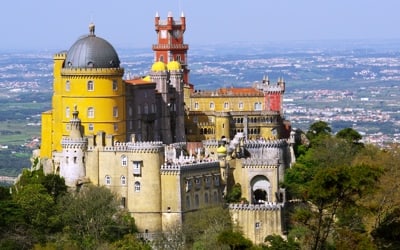
Collections
Sintra with Palaces
212 Activities
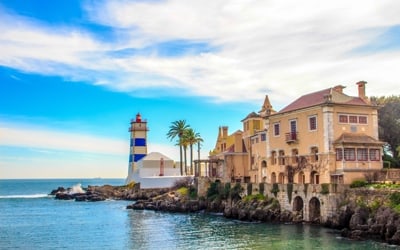
Collections
Cascais
153 Activities
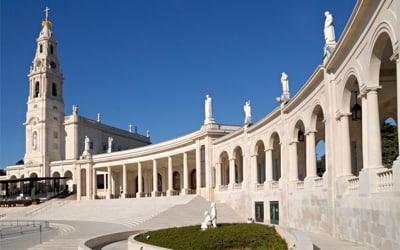
Collections
Fátima
164 Activities
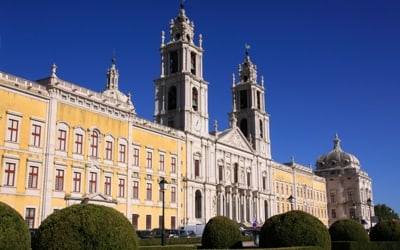
Collections
From Lisbon
116 Activities

Collections
Gourmet
170 Activities
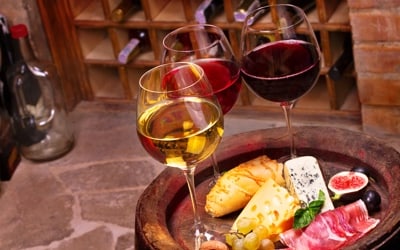
Collections
Wine Tour
128 Activities

Collections
Walking Tour
96 Activities
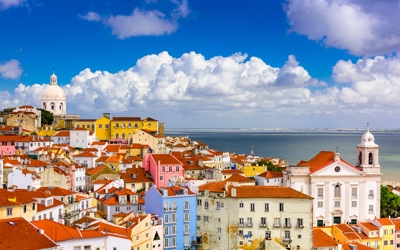
Collections
City Tour
138 Activities
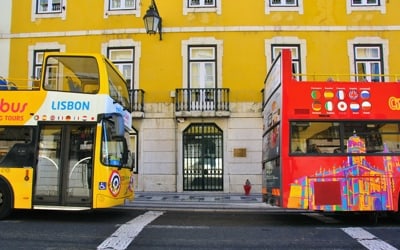
Collections
Bus Tour
50 Activities
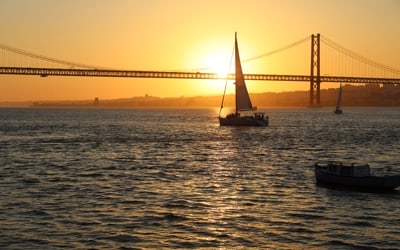
Collections
Lisbon Sunset
31 Activities

